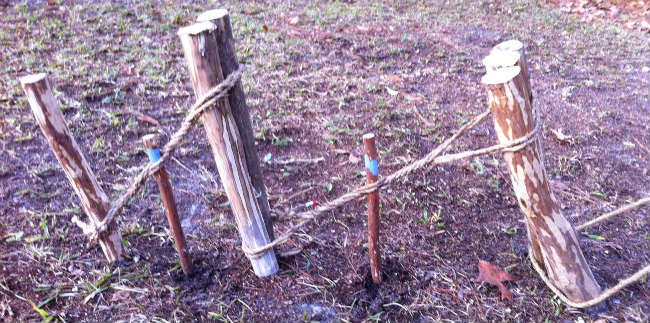A couple of years ago, I used to own a Jeep Wrangler which was my pride and joy. I outfitted the vehicle with a 4″ lift, 33″ tires and all the bells and whistles. The last item which I wanted was a nice winch. Winches are great tools to get your vehicle unstuck, get other vehicles unstuck, or even used as a rescue operation to haul persons or gear.
The only problem with winches is that they are expensive, heavy, must remain fixed to the vehicle and use electricity. However, there are cheaper and more practical solutions! In this article, I’ll discuss some cheap alternatives to the winch and how they are used for a variety of preparedness situations.
Option 1: The Manual Winch
The manual winch is a cheap (<$30) alternative to an electric winch. Using the gear’s self locking rotational leverage, you can pull your car out of a snowy or muddy mess. The Reese model below holds 1,500 lbs and has a 20 foot line.
Although you could use this item for rope rescue, it would be somewhat difficult as you only have 20 feet to work with. For a more diverse option, I would use static rope and pulleys as I mention towards the bottom of this article.
Also note, if you have a large truck or want to get unstuck from severe vehicle entrapment, you’ll need more mechanical force than what the item above delivers. The High Jack Lift is a tool that can be used as a lift and a winch and may be something to consider.
Before we start exploring Option 2 (rope pulleys), what if you don’t have a tree, rock or other anchor to hook up to your winch? With some creative bushcraft, you can make your own anchor point using a 3-2-1 anchor system.
Bushcraft Anchors
An absolutely excellent Boy Scout site which has a wealth of rope work and pioneering information is ScoutPioneering.com. Using a 3-2-1 tourniquet anchor can provide a solid anchor for many uses. There are several considerations that must be made in terms of depth, angle, soil consistency, etc, so I recommend checking out their full length article on the subject. I highly recommend knowing how to do this as there are multiple uses for an anchor in the field.
Option 2: Rope Pulleys
How do Pulleys Work?
Pulleys act as a force multiplier when pulling or lifting loads. The concept is very easy to understand. A 2:1 pulley will cut a load in half, a 3:1 pulley will cut your load down to only a 1/3, etc. These images from ropebook.com illustrate the concept best:
1:1 Pulley (full weight)

3:1 Pulley (1/3) weight

All you need is a couple of supplies:
- A non-stretching “Static rope” (your choice of diameter & length). Make sure you research the amount of load it can take.
- Pulleys which match the diameter of your rope. Carabiners will also work but cause higher friction than the smooth pulley gears. They make some small plastic pulleys which fit over carabiners for a “quick pulley” if you desire.
- And if you want a self locking mechanism, you can purchase a climbing ascender. This essentially allows the rope to only travel one way. This would be good if you need a helping hand to “arrest” the rope after each pull. Another great use of ascenders is explained in my article Tree Climbing & Sentry Lookout Positioning. To use, all you need to do is slide the ascender over the line you are pulling and anchor it separately to your anchor point (tree, rock, etc.)
Here is a cheaper model from petzl.
Overall (+some carabiners), you might spend around $200 on the gear, but it’s very versatile. You can use it to pull your car out of stuck places, haul gear, or do rappelling/rescue work (with additional climbing gear).
To set up the gear, you just need to weave rope back and forth between anchors using the pulleys per the images above as a guide. For increased pulley leverage, go to Ropebook.com and refer to their images for a 4:1, 5:1 or more pulley system. To secure the rope to your load, I would recommend the double bowline knot as its very strong and comes undone easily after loading.
Questions? Don’t hesitate to ask in the comments








